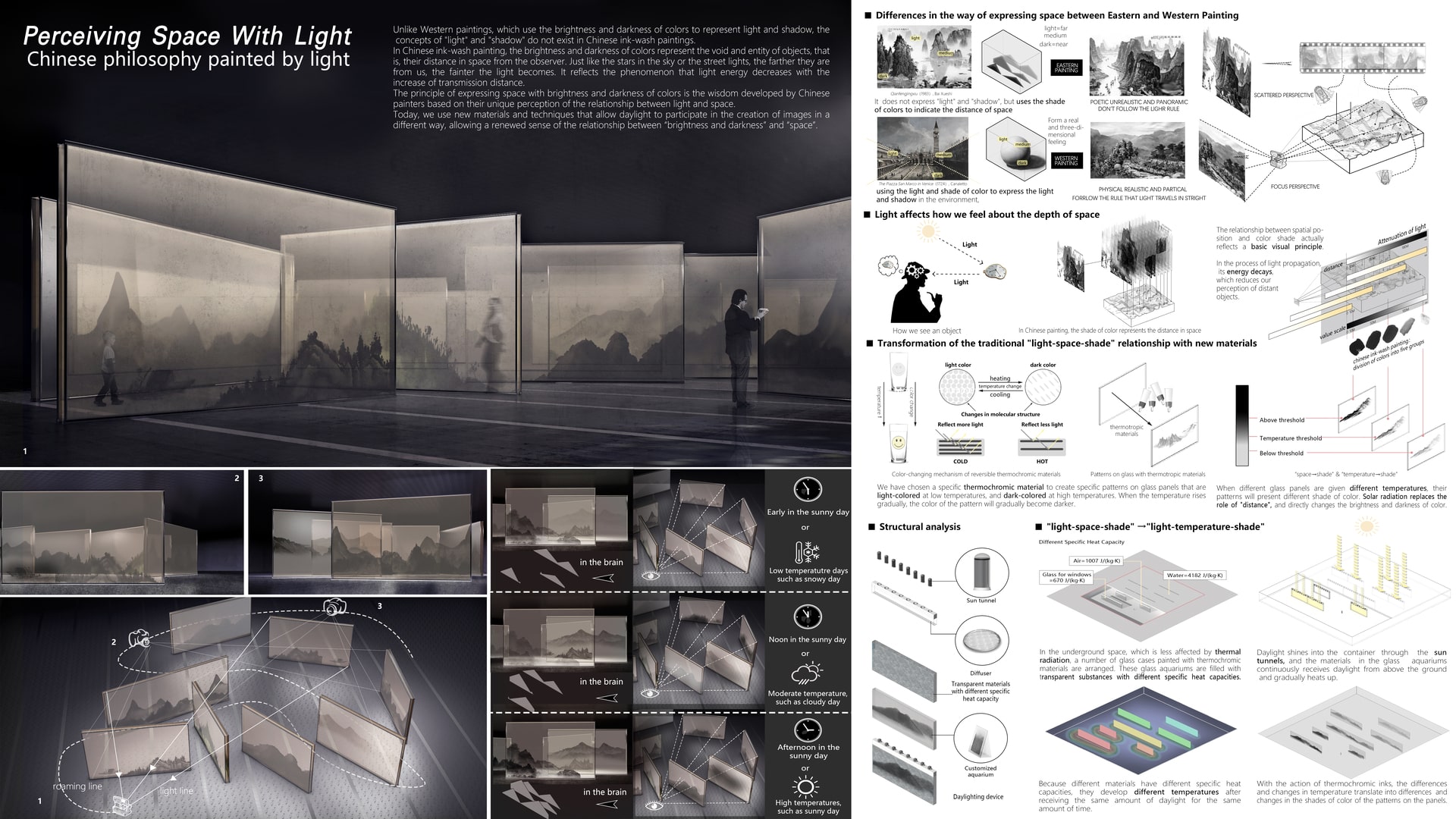Project Description
Unlike Western paintings, which use the brightness and darkness of colors to represent light and shadow, the concepts of "light" and "shadow" do not exist in Chinese ink-wash paintings. In Chinese ink-wash painting, the brightness and darkness of colors represent the void and entity of objects, that is, their distance in space from the observer. Just like the stars in the sky or the street lights, the farther they are from us, the fainter the light becomes. It reflects the phenomenon that light energy decreases with the increase of transmission distance. The principle of expressing space with brightness and darkness of colors is the wisdom developed by Chinese painters based on their unique perception of the relationship between light and space. Today, we use new materials and techniques that allow daylight to participate in the creation of images in a different way, allowing a renewed sense of the relationship between “brightness and darkness” and “space”. Thermochromic materials change color with temperature and are used in a wide variety of applications in everyday life. We have chosen a specific thermochromic material to create specific patterns on glass panels that are light-colored at low temperatures, and dark-colored at high temperatures. When the temperature rises gradually, the color of the pattern will gradually become darker. When different glass panels are given different temperatures, their patterns will present different shade of color. Temperature replaces the role of "distance", and directly changes the brightness and darkness of color. In the underground space, which is less affected by thermal radiation, a number of glass cases painted with thermochromic materials are arranged. These glass aquariums are filled with transparent substances with different specific heat capacities, such as air, water, glass, etc. Daylight shines into the container through the sun tunnels, and the materials in the glass aquariums continuously receives daylight from above the ground and gradually heats up. Because different materials have different specific heat capacities, they develop different temperatures after receiving the same amount of daylight for the same amount of time. With the action of thermochromic inks, the differences and changes in temperature translate into differences and changes in the shades of color of the patterns on the panels. In this way, daylight participates in the painting of "Chinese ink-wash Paintings", making people feel the relationship between “brightness and darkness” and “space” in Chinese ink-wash painting again.
